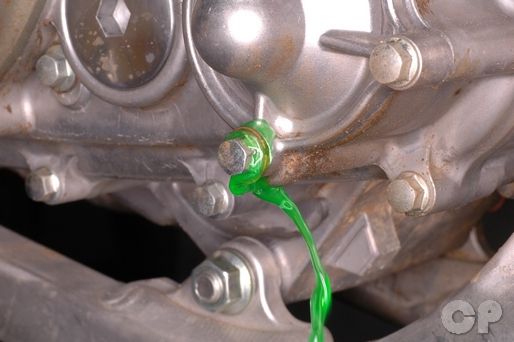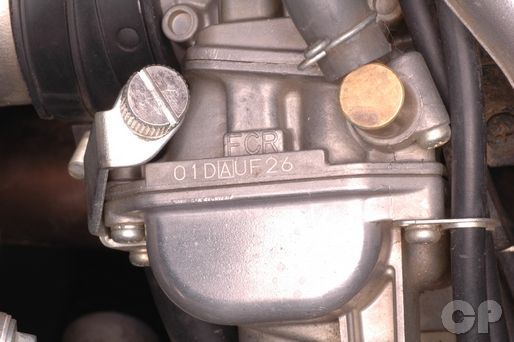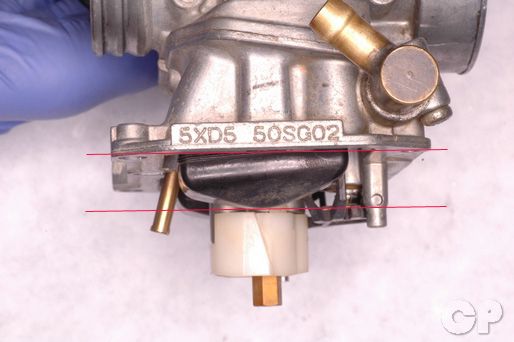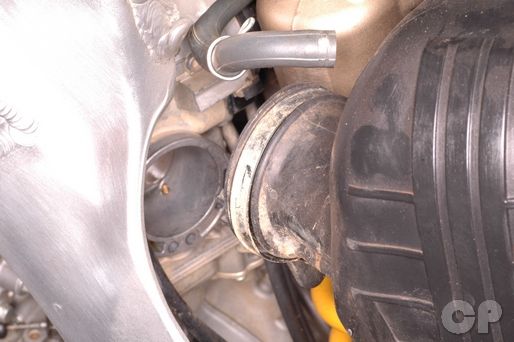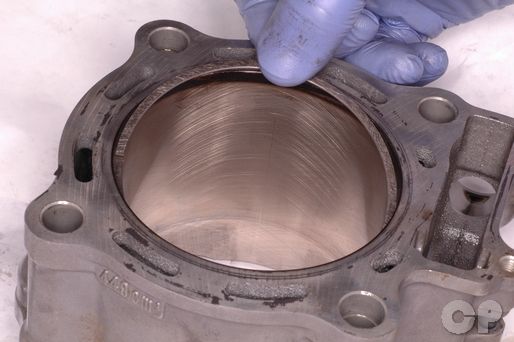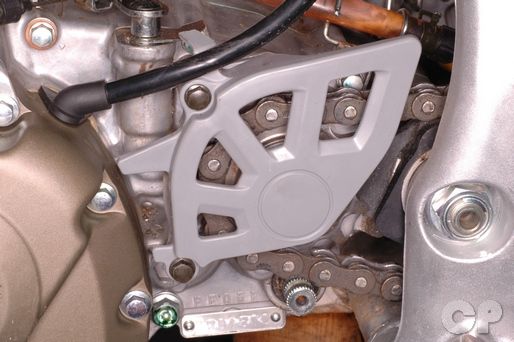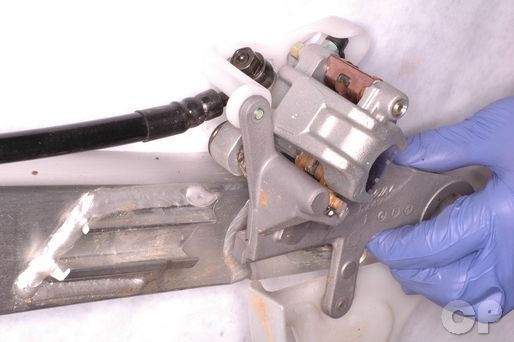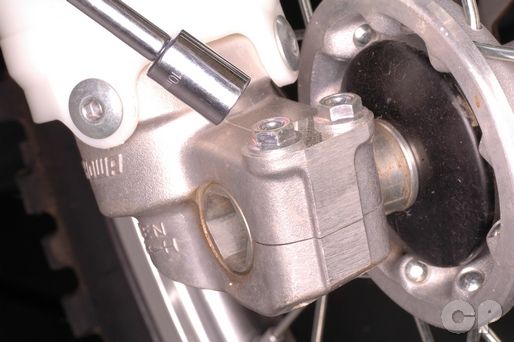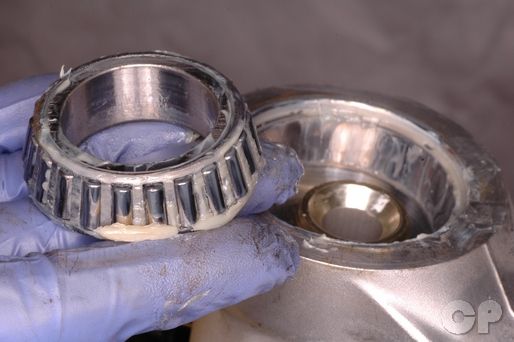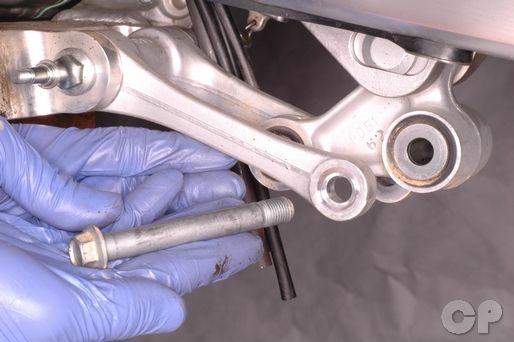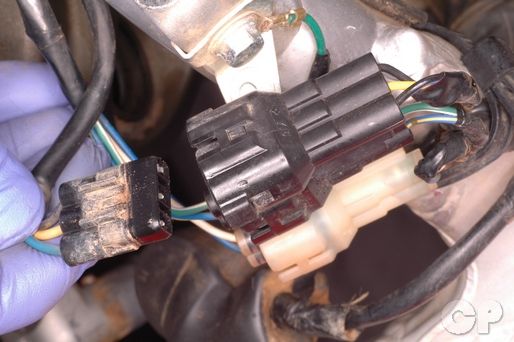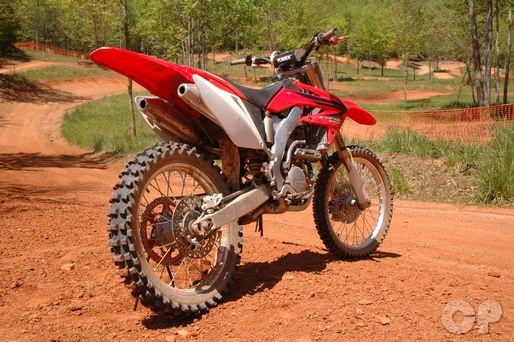Материал из BikesWiki — энциклопедия японских мотоциклов
Перейти к: навигация, поиск
Honda CRF250X
Ниже представлены прямые ссылки на скачку сервисной документации.
Для Honda CRF250
- Руководство пользователя (Owners Manual) на Honda CRF250R
- Руководство пользователя (Owners Manual) на Honda CRF250X (на русском)
- Сервисный мануал (Service Manual) на Honda CRF250X (2004-2005)
- Сервисный мануал (Service Manual) на Honda CRF250R (2004-2009)
- Honda CRF250R / CRF250RX: Руководство пользователя (Owner’s Manual), 2022
Обзор модели
- Honda CRF 250
Источник — «https://bikeswiki.ru/index.php?title=Honda_CRF250:_мануалы&oldid=19962»
Категория:
- Сервисная документация
- Manuals
- Brands
- Honda Manuals
- Motorcycle
- CRF250R
- Owner’s manual
-
Contents
-
Table of Contents
-
Troubleshooting
-
Bookmarks
Quick Links
CRF250R
OWNER’S MANUAL & COMPETITION HANDBOOK
© Honda Motor Co., Ltd. 2013
Related Manuals for Honda CRF250R
Summary of Contents for Honda CRF250R
-
Page 1
CRF250R OWNER’S MANUAL & COMPETITION HANDBOOK © Honda Motor Co., Ltd. 2013… -
Page 2
This manual should be considered a permanent part of the motorcycle and should remain with the motorcycle when it is resold. All information in this publication is based on the latest product information available at the time of approval for printing. Honda Motor Co., Ltd. -
Page 3
Honda CRF250R OWNER’S MANUAL & COMPETITION HANDBOOK… -
Page 4
Throughout this manual, the following information is intended to help you avoid damage abbreviations are used to identify the respective When you own a Honda, you’re part of a to your Honda, other property, or the environment. parts or system. -
Page 5
A Few Words About Safety A Few Words About Safety Your safety, and the safety of others, is very important. And operating this motorcycle safely is an important responsibility. To help you make informed decisions about safety, this manual contains a section devoted to Motorcycle Safety, as well as a number of Safety Messages throughout the manual. -
Page 6: Table Of Contents
Air Cleaner …………55 Cylinder Removal……..78 SERVICING YOUR HONDA…… 21 Cleaning …………55 Piston Removal……….79 Before You Service Your Honda Crankcase Breather ………57 Piston Ring Removal ……..79 The Importance of Maintenance ….. 22 Draining …………57 Piston/Piston Pin/Piston Ring Inspection ..80 Maintenance Safety ……..
-
Page 7
Control Cables ………..107 Transporting Your Motorcycle ….. 144 Front Suspension Inspection ……. 86 Nuts, Bolts, Fasteners ……..108 Storing Your Honda ……..145 Rear Suspension Inspection ……87 Appearance Care ………..109 Preparation for Storage ……145 Recommended Fork Oil ……88 General Recommendations ……109… -
Page 9: Motorcycle Safety
Motorcycle Safety Motorcycle Safety This section presents some of the most important Important Safety Information ……2 information and recommendations to help you ride Important Safety Precautions ……2 your CRF safely. Please take a few moments to Accessories & Modifications ……3 read these pages.
-
Page 10: Important Safety Information
Keep your Honda in Safe Condition. As an experienced rider, you know there is much Maintaining your CRF properly is critical to your you can do to protect yourself when you ride.
-
Page 11: Accessories & Modifications
Accessories & Modifications Accessories & Modifications Accessories & Modifications Installing non-Honda accessories, removing original equipment, or modifying your CRF in any way that would change its design or operation, could seriously impair your CRF’s handling, stability, and braking, making it unsafe to ride.
-
Page 12: Safety Labels
Safety Labels Safety Labels This page shows the locations of safety labels on your CRF. These labels warn you of potential hazards that could cause serious injury. Others provide important safety information. Read these labels carefully and don’t remove them. If a label comes off or becomes hard to read, contact your dealer for replacement.
-
Page 13: Instruments & Controls
Instruments & Controls Instruments & Controls Read this section carefully before you ride. It Operation Component Locations ……6 presents the location of the basic controls on your Indicator …………7 CRF. MIL Blink Pattern ……….7 Current DTC/Freeze DTC……7 Circuit Inspection………..8 DTC Index ………….9 Instruments &…
-
Page 14: Operation Component Locations
Operation Component Locations Operation Component Locations front brake lever clutch lever throttle grip engine stop button fast idle knob (engine idle speed) kickstarter shift lever rear brake pedal Instruments & Controls…
-
Page 15: Indicator
If the MIL comes on at any other time, reduce speed and refer to an official Honda Shop Manual available for purchase from your dealer. If the MIL does not come on when it should, have your dealer check it for problems.
-
Page 16: Circuit Inspection
Indicator Circuit Inspection Always clean around the ECM and keep debris away from the connectors before disconnecting them. A faulty PGM-FI system is often related to poorly connected or corroded connections. Check the following connections. (1) MAP sensor connector (2) ECT sensor connector (3) TP sensor connector (4) IAT sensor connector (5) Injector connector…
-
Page 17: Dtc Index
The MIL blinks of the 12, 19, and 69 times can not be checked because the engine can not start at the situation. If the engine does not start, check all connector connections and/or refer to an official Honda Shop Manual for troubleshooting of the PGM-FI symptom.
-
Page 18
Instruments & Controls… -
Page 19: Before Riding
Before each ride, you need to make sure you and Are You Ready to Ride? ………12 your Honda are both ready to ride. To help get you Is Your Motorcycle Ready to Ride? ….13 prepared, this section discusses how to evaluate Pre-ride Inspection ……..13…
-
Page 20: Are You Ready To Ride
Are You Ready to Ride? Are You Ready to Ride? Before riding your CRF for the first time, we WARNING strongly recommend that you read this owner’s manual, make sure you understand the safety Not wearing a helmet increases the messages, and know how to operate the controls.
-
Page 21: Is Your Motorcycle Ready To Ride
Is Your Motorcycle Ready to Ride? Is Your Motorcycle Ready to Ride? Competitive riding can be tough on a motorcycle, Pre-ride Inspection so it’s important to inspect your CRF and correct any problems you find before each ride. Check the Check the following before each ride: following items (page numbers are at the right): •…
-
Page 22
Before Riding… -
Page 23: Basic Operating Instructions
Basic Operating Instructions Basic Operating Instructions This section gives basic information on how to Safe Riding Precautions …….16 start and stop your engine as well as break-in Starting & Stopping the Engine ……17 guidelines. Fast Idle Knob……….17 Preparation ………..17 Starting Procedure……..17 How to Stop the Engine …….18 Break-in Guidelines ……..19 Basic Operating Instructions…
-
Page 24: Basic Operating Instructions
Basic Operating Instructions Basic Operating Instructions Safe Riding Precautions Before riding your CRF for the first time, please review the Important Safety Precautions beginning on page 2 and the previous section, titled Before Riding. For your safety, avoid starting or operating the engine in an enclosed area such as a garage.
-
Page 25: Starting & Stopping The Engine
Starting & Stopping the Engine Starting & Stopping the Engine Always follow the proper starting procedure Warm Engine Starting Starting Procedure described below. 1. Shift the transmission into neutral. 2. Kick-start the engine. (Do not open the Always follow the proper starting procedure Your CRF can be kickstarted with the transmission throttle.) described as follows.
-
Page 26: How To Stop The Engine
Starting & Stopping the Engine How to Stop the Engine Normal Engine Stop 1. Shift the transmission into neutral. 2. Lightly open the throttle (1) two or three times, and then close it. 3. Push and hold the engine stop button (2) until the engine stops completely.
-
Page 27: Break-In Guidelines
Break-in Guidelines Break-in Guidelines Help assure your CRF’s future reliability and performance by paying extra attention to how you ride during the first operating day or 25 km (15 miles). During this period, avoid full-throttle starts and rapid acceleration. This same procedure should be followed each time when: •…
-
Page 28
Basic Operating Instructions… -
Page 29: Servicing Your Honda
Subframe …………37 Appearance Care ……….. 109 unnecessary. If you want to check the ignition timing, refer to an official Honda Shop Manual. Service Procedures Fluids & Filters An optional tool kit may be available. Check with Fuel System ………….39…
-
Page 30: The Importance Of Maintenance
Improperly maintaining this motorcycle or failing to correct a problem before you ride can cause a crash in which you can be seriously hurt or killed. Always follow the inspection and maintenance recommendations and schedules in this owner’s manual. Servicing Your Honda…
-
Page 31: Maintenance Safety
Be sure there is adequate ventilation whenever you operate the engine. Burns from hot motorcycle parts. Let the engine and exhaust system cool before touching. Injury from moving parts. Do not run the engine unless instructed to do so. Servicing Your Honda…
-
Page 32: Maintenance Schedule
Procedures for items in this schedule are provided 6. Replace every year. in an official Honda Shop Manual available for purchase. Maintenance Procedures: I : inspect and clean, adjust, lubricate, or replace,…
-
Page 33
94 – 96 STEERING HEAD BEARINGS *WE RECOMMEND THESE ITEMS BE SERVICED BY REFERRING TO THE HONDA SHOP MANUAL. This maintenance schedule is based upon average riding condition. Machine subjected to severe use require more frequent servicing. NOTE: 1. Clean after every heat for dusty riding condition. -
Page 34: General Competition Maintenance
Use Honda Genuine Parts or their equivalents when servicing your CRF. Clean parts in non-flammable (high flash point) cleaning solvent (such as kerosene) when disassembling.
-
Page 35
–1 (rpm) performance. Follow the servicing instructions in the Maintenance section. Use Honda Foam Air Filter Oil or an equivalent. Be sure to grease the air cleaner flange where it contacts the air cleaner housing. -
Page 36
For added peace of mind, remove the nuts, clean the threads, and Nuts, Bolts, Etc apply Honda Thread Lock or an equivalent prior to torquing the nuts. Application of a thread locking agent to essential fasteners offers added assurance and security. Remove the nuts,… -
Page 37
See an official Honda Shop Manual or consult your dealer for replacing the mechanical seal or oil seal. Both seals should be replaced at the same time. -
Page 38: Before & After Competition Maintenance
(1) are in the same position on each side. This will ensure that the rear wheel is in proper alignment and allow maximum (2) pressure release screw performance from the rear disc brake. Maintaining proper wheel alignment will also extend brake pad wear. Servicing Your Honda…
-
Page 39: After Competition Maintenance
If you decide to wash your CRF or use cleaners, Remove the drive chain, clean and lubricate it refer to Appearance Care (page 109). (pages 98, 99). Be sure the chain is wiped clean and is dry before lubricating the chain. Servicing Your Honda…
-
Page 40: Maintenance Component Locations
A drive chain front suspension transmission transmission caliper reservoir rebound damping oil fill cap oil check bolt adjuster (both left and right) Servicing Your Honda…
-
Page 41: Seat
2. Install and tighten the seat mounting bolts to the specified torque: 26 N·m (2.7 kgf·m, 19 lbf·ft) (1) seat mounting bolts (2) seat (1) seat front prong (2) front seat bracket (3) seat rear prong (4) seat stopper plate Servicing Your Honda…
-
Page 42: Fuel Tank
Check the fuel tank stopper cable (14) for 9. Unhook the fuel tank band (9). deterioration, kinks or other damage. Do not support the fuel tank by the fuel feed hose (11). Servicing Your Honda…
-
Page 43
3. Install the collar and fuel tank bolt (4). 4. Hook the fuel tank band (5). (14) (11) fuel feed hose (14) fuel tank stopper cable (13) fuel tank (3) fuel tank (4) collar and fuel tank bolt (5) fuel tank band (cont’d) Servicing Your Honda… -
Page 44
(13) shroud tabs (14) air cleaner housing cover tabs (10) (15) shroud B bolts (12) (16) collars and shroud A bolts 11. Install the seat (page 33). (11) (9) shroud hooks (10) recesses (11) shrouds (12) frame Servicing Your Honda… -
Page 45: Subframe
Right side: 4. Remove the air cleaner case (3) from the subframe (4). (1) subframe upper bolts (2) subframe lower bolts (7) subframe lower bolts (8) subframe upper bolts (9) subframe (3) air cleaner case (4) subframe (cont’d) Servicing Your Honda…
-
Page 46
7. Install the left and right mufflers (page 101). the rear fender with the hole in the subframe, and then install the rear fender mounting bolts 8. Install the seat (page 33). and nuts (6). (5) rear fender (6) rear fender mounting bolts and nuts Servicing Your Honda… -
Page 47: Fuel System
Never use stale or contaminated petrol. Avoid getting dirt, dust or water in the fuel tank. (1) fuel quick connect fitting cover (2) fuel line 4. Install the fuel quick connect fitting cover. 5. Install the fuel tank (page 35). Servicing Your Honda…
-
Page 48: Fuel Pressure Relieving
(1) fuel quick connect fitting cover (2) fuel pump (3) fuel quick connect fitting 5. Remove the bolt (4), clamp and setting rubber (5). (8) shop towel (4) bolt (5) clamp and setting rubber Servicing Your Honda…
-
Page 49
• Handle fuel only outdoors. • Wipe up spills immediately. Align (1) retainer (new) (3) locking pawls Injector side: Fuel Pump side: (2) connector (4) connector grooves (10) (10) (9) retainer tabs (10) locking pawls (cont’d) Servicing Your Honda… -
Page 50
(16) rubber cover (10) by aligning the clamp tab (11) with the 7. Increase the fuel pressure (page 47). groove (12) of the stay. (10) (11) (12) (8) setting rubber (11) clamp tab (9) clamp (12) groove (10) bolt Servicing Your Honda… -
Page 51: Fuel Pump Filter Replacement
(10) (11) (1) fuel pump mounting bolts (2) stopper cable guide (3) stopper cable (10) fuel pump wire terminals (4) washers (11) fuel pump base (5) collars (6) conical spring washers (7) fuel pump plate (cont’d) Servicing Your Honda…
-
Page 52
13. Remove the fuel pump filter from the fuel pump assembly (20). (12) hooks (14) grooves (18) (13) tabs (20) (19) (21) (18) fuel pump stopper (19) damper rubber (20) fuel pump assembly (21) fuel pump filter Servicing Your Honda… -
Page 53
(14) fuel pump base pump filter as shown. (15) fuel pump unit holder assembly (16) hooks Install the fuel pump stopper (12). (17) grooves (18) tabs (12) (11) (11) damper rubber (new) (12) fuel pump stopper (cont’d) Servicing Your Honda… -
Page 54
(20) black wire terminal (21) fuel pump base terminals (22) O-ring (new) (23) fuel pump unit (27) (27) fuel pump plate (28) identification mark 15. Connect the fuel line (page 41). 16. Increase the fuel pressure (page 47). Servicing Your Honda… -
Page 55: Fuel Pressure Increasing
12. Remove the battery harness and battery (7) battery harness adaptor harness adapter. (8) battery harness 13. Connect the DLC/fuel pump sub harness connector. 14. Install the fuel tank (page 35). (2) DLC/fuel pump sub harness connector Servicing Your Honda…
-
Page 56: Engine Oil
(1) oil code conserving or resource riding area is within the indicated range. (2) oil classification conserving on the circular API service label viscosity SAE 10W-30 (weight) JASO T 903 standard suggested oil Honda “4-STROKE MOTORCYCLE OIL” or equivalent Servicing Your Honda…
-
Page 57: Checking & Adding Oil
Improperly disposal of drained fluids is harmful to the environment. (1) engine oil fill cap/dipstick (2) upper level mark (3) lower level mark (1) engine oil fill cap/dipstick (2) engine oil drain bolt (3) sealing washer (new) (cont’d) Servicing Your Honda…
-
Page 58
(9) facing out, away from the engine. You should see the “OUT-SIDE” mark (10) on the filter body, near the seal. Use a new Honda Genuine oil filter or a filter of equal quality specified for your model. Servicing Your Honda… -
Page 59: Transmission Oil
• Do not use API SH or higher 4-stroke engine oils the MA classification. displaying a circular API “energy conserving” or “resource conserving” service label on the container. They may affect lubrication and clutch performance. (1) oil code (2) oil classification NOT RECOMMENDED Servicing Your Honda…
-
Page 60: Checking & Adding Oil
(3) sealing washer (new) (2) oil check bolt 5. After inspecting the oil level or adding oil, tighten the oil check bolt with a new sealing washer to the specified torque: 12 N·m (1.2 kgf·m, 9 lbf·ft) Servicing Your Honda…
-
Page 61: Coolant
(1) and check coolant level. The coolant level Capacity: is correct when it is at the bottom of the 1.02 ℓ (1.08 US qt, 0.90 Imp qt) after Use only genuine HONDA PRE-MIX COOLANT radiator filler neck (2). disassembly containing corrosion inhibitors, specifically 0.95 ℓ…
-
Page 62: Cooling System Inspection
3. Check the radiator mount for looseness. A small amount of coolant weeping from the 4. Make sure the overflow hose (2) is connected bleed hole is normal. See an official Honda WARNING and not clogged. Shop Manual or consult your dealer for Removing the radiator cap while the 5.
-
Page 63: Air Cleaner
Your CRF’s air cleaner has very specific performance requirements. Use a new Honda Genuine air cleaner specified for your model or an air cleaner of equal quality. (1) air cleaner lid spring…
-
Page 64
(4) air cleaner retaining bolt Install the holder tabs (8) in the holes (9) of the air cleaner element. 9. Apply 1.5 – 5.5 g (0.1 – 0.2 oz) of Honda NOTICE White Lithium Grease or equivalent to the air… -
Page 65: Crankcase Breather
1. Remove the crankcase breather tube plugs (1) from the crankcase breather tubes (2) and drain deposits into a suitable container. 2. Reinstall the crankcase breather tube plugs. (1) crankcase breather tube plugs (2) crankcase breather tubes Servicing Your Honda…
-
Page 66: Throttle
Tighten the lock nut to the specified torque: 4.0 N·m (0.4 kgf·m, 3.0 lbf·ft) Install the dust cover and make the adjustment with the lower adjuster. Servicing Your Honda…
-
Page 67: Throttle Inspection
(1) throttle housing (2) paint mark 2. Check for smooth rotation of the throttle (3) from fully open to fully closed in all steering positions. If there is a problem, see your dealer. (3) throttle Servicing Your Honda…
-
Page 68: Engine Idle Speed
3. Shift the transmission into neutral. Start the engine. 4. Keep the motorcycle in an upright position. 5. Adjust idle speed with the fast idle knob (1). Idle speed: 2,000 ± 100 min (rpm) (–) (1) fast idle knob (+) increase (–) decrease Servicing Your Honda…
-
Page 69: Clutch System
Make sure to adjust the clutch lever freeplay after the clutch cable is disconnected. (–) (1) lock nut (2) adjuster (4) lock nut (5) integral cable adjuster (+) increase freeplay (–) decrease freeplay 6. Adjust the cable end adjuster for minor adjustment (page 62). Servicing Your Honda…
-
Page 70: Other Inspections & Lubrication
2. Check the clutch cable for deterioration, kinks, worn, or the clutch discs may be worn. or damage. Inspect the clutch discs and plates (page 64). Servicing Your Honda…
-
Page 71: Clutch Disc/Plate Removal
7. Remove the eight clutch discs, seven clutch three progressive steps. plates, judder spring and spring seat (12). (12) (6) clutch lifter assembly (7) clutch lifter rod (12) clutch discs, clutch plates, judder spring and spring seat Servicing Your Honda…
-
Page 72: Clutch Disc/Plate Inspection
Service Limit: 0.10 mm (0.004 in) (5) (4) Replace the clutch discs and plates as a set. (1) spring seat (4) clutch plates (2) judder spring (5) clutch disc A (3) clutch discs (2) clutch plate Servicing Your Honda…
-
Page 73
7. Install the five clutch springs and bolts (13). 8. Tighten the bolts in a crisscross pattern in two or three steps to the specified torque: 12 N·m (1.2 kgf·m, 9 lbf·ft) (12) (13) (12) clutch pressure plate (13) clutch springs and bolts Servicing Your Honda… -
Page 74: Spark Plug
If a plug is too tight, the threads may be damaged. 10. Connect the spark plug cap. Take care to avoid (3) sealing gasket pinching any cables or wires. (4) spark plug gap 11. Install the fuel tank and seat (pages 33, 35). Servicing Your Honda…
-
Page 75: Valve Clearance
3. Remove the cylinder head cover (this page). (1) breather tube (2) spark plug cap 3. Remove the cylinder head cover bolts, rubber seals (3) and cylinder head cover (4). (3) cylinder head cover bolts and rubber seals (4) cylinder head cover (cont’d) Servicing Your Honda…
-
Page 76: Valve Clearance Inspection
(1) feeler gauge (2) valve lifters (3) intake cam lobes Valve Clearance: IN: 0.12 ± 0.03 mm (0.005 ± 0.001 in) (2) primary drive gear bolt (4) index mark (3) punch mark Servicing Your Honda…
-
Page 77: Camshaft Removal
3. Remove the cam chain tensioner lifter cover clearance need adjustment, see Camshaft Removal bolt (2) and sealing washer (3). (this page) and select the correct shim for each valve. (2) cam chain tensioner lifter cover bolt (3) sealing washer (cont’d) Servicing Your Honda…
-
Page 78
Do not let the set rings fall into the crankcase. you can easily identify the originally installed location such as intake or exhaust, right or left. If the set rings are remained on the camshaft holder, remove the set rings carefully. (13) (13) intake valve lifters Servicing Your Honda… -
Page 79: Shim Selection
Do not lap the intake valves. They are titanium and have a thin oxide coating. Lapping will damage this coating. If a calculated dimension is out of specifications, have your motorcycle inspected by your dealer. 1.80 mm 1.825 mm 1.85 mm 1.875 mm Servicing Your Honda…
-
Page 80: Camshaft Installation
1/2 engine oil and 1/2 molybdenum disulfide (10) grease containing more than 3% molybdenum disulfide additive) to the following parts. – camshaft cam lobes – each valve lifter outer surface (5) camshaft (10) cam chain (6) intake cam lobes Servicing Your Honda…
-
Page 81
Tighten the camshaft holder bolts in a crisscross pattern in two or three steps. (16) (12) (20) (19) sealing washer (new) (20) cam chain tensioner lifter cover bolt (12) (17) (12) camshaft holders (16) camshaft holder bolts A (17) camshaft holder bolts B (cont’d) Servicing Your Honda… -
Page 82: Crankshaft Hole Cap Installation
(22) condenser stay mounting bolts 13. Rotate the camshaft by rotating the crankshaft (23) feeler gauge clockwise several times and make sure that the piston is at TDC on the compression stroke (page 71). (1) O-ring (new) (2) crankshaft hole cap Servicing Your Honda…
-
Page 83: Cylinder Head Cover Installation
(6) to the specified torque: 10 N·m (1.0 kgf·m, 7 lbf·ft) (1) spark plug hole packing (2) cylinder head cover (3) cylinder head cover packing (2) cylinder head cover (6) cylinder head cover bolts Servicing Your Honda…
-
Page 84: Piston/Piston Rings/Piston Pin
(5) IAT sensor connector (6) crankcase breather tube B (7) clip 15. Loosen the screw (8) on the air cleaner connecting tube clamp (9). (2) radiator hose clamp screw (3) radiator hose (8) screw (9) air cleaner connecting tube clamp Servicing Your Honda…
-
Page 85
(16) (14) insulator (15) (11) (15) cylinder head hanger bolts (16) cylinder head hanger plate bolts (17) left cylinder head hanger plate (11) rear shock absorber upper nut and bolt (18) right cylinder head hanger plate (cont’d) Servicing Your Honda… -
Page 86: Cylinder Removal
24. Remove the cam chain guide (25) from the NOTICE cylinder (26). Do not let the washers and cam chain fall into the crankcase. (26) (21) (25) (25) cam chain guide (21) (22) (26) cylinder (21) cylinder head B bolts and washers (22) cylinder head Servicing Your Honda…
-
Page 87: Piston Removal
6 races or about every 15.0 hours of running. Replace the piston pin every 6 races or about every 15.0 hours of running. (3) dowel pins (4) cylinder gasket (1) piston ring (1) piston pin clips (3) piston (2) piston pin Servicing Your Honda…
-
Page 88: Piston/Piston Pin/Piston Ring Inspection
Piston Ring Installation rotate freely, without sticking. Space the ring end gaps 180 degrees apart We recommend you consult an official Honda 1. Remove the carbon deposits from the piston between top ring and upper side rail. Shop Manual or your dealer for correct Service head and piston ring grooves.
-
Page 89: Piston Installation
Do not align the piston pin clip end gap with the piston cutout (8). (1) shop towels (2) connecting rod small end (3) piston (6) piston pin (7) piston pin clip (4) “ ” mark (5) large valve recess (8) piston cut-out Servicing Your Honda…
-
Page 90: Cylinder Installation
3. Install a new cylinder gasket (1) and dowel pins (2). Do not damage the piston rings and cylinder walls. NOTICE Do not let the dowel pins fall into the crankcase. (3) cylinder (5) cam chain (4) piston rings (1) cylinder gasket (2) dowel pins Servicing Your Honda…
-
Page 91: Cylinder Head Installation
5. Apply engine oil to all cylinder head B bolt threads and seating surface. Install the washers and cylinder head B bolts (7). Install the cylinder bolt (8) and cylinder head A bolts (9). (8) cylinder bolt (9) cylinder head A bolts (cont’d) Servicing Your Honda…
-
Page 92
(0.2 – 0.4 in) (20) air cleaner connecting tube (13) (21) air cleaner connecting tube band screw (10) left cylinder head hanger plate (11) right cylinder head hanger plate (12) cylinder head hanger plate bolts (13) cylinder head hanger bolts Servicing Your Honda… -
Page 93
(23) IAT sensor connector (29) (24) breather tube B (25) clip 14. Connect the radiator hose (26) to the water hose joint (27) of the cylinder head. (27) (29) ECT sensor connector (26) (26) radiator hose (27) water hose joint Servicing Your Honda… -
Page 94: Suspension
Check the dust seals for dust, dirt, and foreign or flash with the outer tube (4). Remove the materials. Check the oil for any contamination. fork leg when replacing the wear ring. Install the wear ring with its end gap (5) facing rearward. Servicing Your Honda…
-
Page 95: Rear Suspension Inspection
• If you have a problem finding an acceptable worn or loose swingarm bearings. There adjustment, return to the standard position and should be no movement. If there is, have the begin again. bearings replaced by your dealer. Servicing Your Honda…
-
Page 96: Recommended Fork Oil
18.9 16.5 14.8 13.7 12.5 11.4 (1) outer tube (3) lock nut wrench 0/32 18.4 15.9 14.5 13.7 11.7 (2) fork damper (4) slider (cm3) 0˚C/32˚F 10˚C/50˚F 20˚C/68˚F (1) outer tube (6) oil holes 30˚C/86˚F Inverted time (minutes) Servicing Your Honda…
-
Page 97
13.0 US oz, it nears full 13.5 Imp oz compression. (1) outer tube Minimum oil 300 cm Slightly softer as (2) fork damper capacity 10.1 US oz, it nears full (7) O-ring 10.6 Imp oz compression. Servicing Your Honda… -
Page 98: Brakes
(page 93), there is probably air in the brake system. (–) Refer to an official Honda Shop Manual or see your dealer to have the air bled from the system. (1) lock nut (+) raise the pedal height…
-
Page 99: Fluid Level Inspection
If the travel for the rear brake pedal feels leaks. excessive, there is probably air in the brake system and it must be bled. Refer to an official Honda If the pulling distance for the front brake lever Shop Manual or see your dealer for brake bleeding.
-
Page 100
1.0 N·m (0.1 kgf·m, 0.7 lbf·ft) (1) rear brake reservoir cap bolts (2) reservoir cap (3) set plate (4) diaphragm (1) front brake reservoir cap screws (5) upper level mark (2) reservoir cap (3) diaphragm (4) upper level mark Servicing Your Honda… -
Page 101: Brake Pad Wear
1.0 mm (0.04 in) (1) brake pads (3) brake disc (2) rear brake caliper replace 1.0 mm (0.04 in) wear indicator grooves (1) brake pads (3) brake disc (2) front brake caliper Servicing Your Honda…
-
Page 102: Wheels
Wheel Rims & Spokes Axles & Wheel Bearings Keeping the wheels true (round) and maintaining 1. Inspect the wheel rims (1) and spokes (2) for See an official Honda Shop Manual for inspection correct spoke tension are critical to safe damage. information: motorcycle operation.
-
Page 103: Tyres & Tubes
Make sure the valve stem caps are secure. If necessary, install new caps. Servicing Your Honda…
-
Page 104: Tyre Replacement
• Use a replacement tyre equivalent to the original. • Replace the tube any time you replace a tyre. The old tube will probably be stretched and, if installed in a new tyre, could fail. Servicing Your Honda…
-
Page 105: Drive Chain
Lubricate the drive chain (page 98) if it appears dry or shows signs of rust. Lubricate any kinked or binding links and work them free. Adjust chain slack if needed (page 98). (2) chain guide slider (3) wear limit Servicing Your Honda…
-
Page 106: Drive Chain Rollers
27 N·m (2.8 kgf·m, 20 lbf·ft) Clean the threads of the drive chain roller bolt and apply locking agent to the threads. Tighten the drive chain roller bolt and nut to the specified torque: 12 N·m (1.2 kgf·m, 9 lbf·ft) Servicing Your Honda…
-
Page 107: Removal, Cleaning & Replacement
17 pins, from pin centre to pin centre. If the measurement exceeds the service limit, replace the chain. After the chain is measured, shift the transmission into neutral again before proceeding with inspection and service. Servicing Your Honda…
-
Page 108: Exhaust Pipe/Muffler
A damaged exhaust pipe and mufflers may reduce engine performance. (5) left muffler mounting bolt (6) washer (7) left muffler (1) side covers (3) bolts (2) air cleaner housing covers 3. Loosen the left muffler clamp bolt (4). (4) left muffler clamp bolt Servicing Your Honda…
-
Page 109: Muffler Installation
B bolt (8), washer A (9), and right muffler mounting A bolt (10). (13) (9) right muffler mounting A bolt (10) washer A (11) right muffler mounting B bolt (12) washer B (13) right muffler (11) (11) right muffler clamp bolt (cont’d) Servicing Your Honda…
-
Page 110
10 N·m (1.0 kgf·m, 7 lbf·ft) (14) (15) (17) (13) (18) (19) (13) left muffler (14) left muffler mounting bolt (17) air cleaner housing covers (19) bolts (15) washer (18) side covers 14. Install the seat (page 33). Servicing Your Honda… -
Page 111: Exhaust Pipe Removal
4. Tighten the exhaust pipe joint nuts to the specified torque: 21 N·m (2.1 kgf·m, 15 lbf·ft) 5. Tighten the right muffler clamp bolt, right muffler mounting A bolt and B bolt (page 102). 6. Install the left muffler (page 102). Servicing Your Honda…
-
Page 112: Steering Damper
• After break-in, test run your CRF with the dealer for further inspection. Your dealer is Refer to an official Honda Shop Manual or see steering damper at the standard setting before qualified to determine whether or not replacement your dealer for steering damper disassembly.
-
Page 113: Removal
(4). it extends to its maximum length. If the damper rod does not extend to its maximum length, refer to an official Honda Shop Manual for disassembly and inspection instructions or see your dealer. 4. Install the number plate (3) by aligning its holes (7) with the tabs (8) on the steering stem.
-
Page 114: Installation
(3) facing move smoothly and quietly. toward the front side. Refer to an official Honda Shop Manual or see 3. Install the connector stay (4), collar (5) and your dealer. steering damper mounting bolts (6).
-
Page 115: Additional Maintenance Procedures
If any roughness or play is felt, but you do not see any movement in the steering head, the fork bushings may be worn. Refer to an official Honda Shop Manual for replacement or adjustment procedures, or see your dealer. (1) handlebar…
-
Page 116: Nuts, Bolts, Fasteners
Drive sprocket bolt (5) transmission oil check bolt (13) transmission oil drain bolt (6) clutch cover bolts (14) cylinder head B bolts Transmission oil drain (7) coolant drain bolt bolt (8) engine oil drain bolt Cylinder head B bolts Servicing Your Honda…
-
Page 117: Appearance Care
Detergent Frequent cleaning and polishing will keep your brake master cylinders Honda looking newer longer. Frequent cleaning drive chain Allow the engine, muffler, brakes, and other high- also identifies you as an owner who values his electrical circuit temperature parts to cool before washing.
-
Page 118: Condensation Control
After washing, dry with a soft, clean cloth. Follow the suggestions given in the pages of this manual for lubricating items such as the brake and clutch lever pivot points and footpeg pivot pins. Servicing Your Honda…
-
Page 119: Adjustments For Competition
Adjustments for Competition Adjustments for Competition This section tells you how to fine tune your CRF Front Suspension Adjustments ……112 for maximum competition performance. Front Suspension Air Pressure ….112 Front Suspension Damping……112 Initial suspension adjustments should be Fork Springs……….113 performed after a minimum of 2 hours of easy Front Suspension Disassembly ….114 break-in time.
-
Page 120: Front Suspension Adjustments
Front Suspension Adjustments Front Suspension Adjustments The front suspension can be adjusted for the rider’s Front Suspension Air Pressure Front Suspension Damping weight and riding conditions by using one or more of the following methods: Air is an unstable gas which builds up pressure as it Compression Damping Adjustment is worked (such as in a fork).
-
Page 121: Fork Springs
Front Suspension Adjustments Both compression and rebound damping can be Fork Springs increased by turning the adjuster clockwise. The fork springs in CRF’s are about right for riders NOTICE weighing between 77 and 91 kg (170 and 200 lb) (less riding gear). So if you’re a heavier rider, you Always start with full hard when adjusting have to go up on the oil capacity or get a stiffer damping.
-
Page 122: Front Suspension Disassembly
3 hours of riding. See damper: it may damage them. NOTICE an official Honda Shop Manual or your dealer for this service. Keep the master cylinder upright to prevent air • When disassembling the fork, turn the from entering system.
-
Page 123
Front Suspension Adjustments 7. Remove the front axle nut (10) and loosen the 11. Loosen the fork bridge lower pinch bolts (20), then pull the fork legs down and out. axle pinch bolts (11) on both forks. (16) Pull the front axle shaft (12) out of the wheel hub and remove the front wheel with collars. -
Page 124
Front Suspension Adjustments 14. Hold the outer tube, then remove the fork 15. Drain the fork oil from the outer tube/slider 18. Push the fork center bolt (29) out from the axle damper (6) from the outer tube using a lock nut (27) and oil holes (28) of the fork damper. -
Page 125: Damper Oil Change
Front Suspension Adjustments 23. Remove the fork damper assembly (33) from Damper Oil Change (24) the fork assembly (34). (31) Remove the fork from the vise. 1. Place the fork damper (1) in a vise with a piece Remove the fork spring (35), spring retainer of wood or soft jaws to avoid damage.
-
Page 126
Front Suspension Adjustments 3. Remove the fork cap assembly (2) from the 6. Clean the fork cap and fork damper threads (6). 8. Pump the fork damper piston rod (4) slowly fork damper threads and then pop it out by several times to bleed the air from the fork pumping the fork damper piston rod (4) damper (1). -
Page 127
Front Suspension Adjustments 10. Extend the fork damper piston rod (4) to 11. Place the fork damper (1) in a vise with a piece 13. Check the fork damper piston rod sliding maximum length, holding it, install the fork of wood or soft jaws to avoid damage. surface for damage. -
Page 128: Fork Assembly
Front Suspension Adjustments 15. Drain the extra oil from the oil holes (12) of the 2. Tighten the fork center bolt lock nut (2) fully Fork Assembly and measure the thread length (A) as shown. fork damper oil chamber (5). Standard: 11 –…
-
Page 129
Front Suspension Adjustments 3. Install the collar (3) to the C-ring (4) of the fork 4. Blow out the oil completely off the fork spring 6. Push out the fork damper piston rod from the (8) using compressed air. damper assembly (5) as shown. axle holder of the slider by pushing the fork Install the fork spring to the fork damper Install the washer (6) and spring retainer (7) to… -
Page 130
Front Suspension Adjustments 9. Measure the clearance between the fork center 11. Remove the piston base or mechanic’s stopper bolt lock nut (2) and fork center bolt (12). tool while pushing the fork damper. Standard: 1.5 – 2.0 mm (0.06 – 0.08 in) Apply locking agent to the fork center bolt threads. -
Page 131
Front Suspension Adjustments 14. Remove the fork damper from the fork. Fork Oil Capacity Optional Stiffer 4.80 N/mm (27.41 lbf/in) Fork Spring 15. Pour the recommended fork oil (14) into the Standard 4.59 N/mm (26.21 lbf/in) Fork Spring fork assembly (1). 3 scribe marks Recommended Oil: No mark… -
Page 132
Front Suspension Adjustments 16. Install a new O-ring (15) on the fork damper 19. Tighten the fork damper (17) to the specified assembly (5). Apply the recommended fork oil torque using the lock nut wrench (18): Align to the O-ring. Actual: 17. -
Page 133
Front Suspension Adjustments 23. Clean the threads of the fork protector socket 26. Clean the threads of the front brake caliper bolts (22) and axle holder thoroughly. mounting bolts (29) and brake caliper (30) (31) Apply locking agent to the bolt threads. thoroughly. -
Page 134
Front Suspension Adjustments 30. Install the handlebar (34), mounting rubbers, 32. With the front brake applied, pump the fork up 34. Install the disc cover (37) and tighten the disc washers and handlebar lower holder nuts (35) and down several times to seat the axle and cover socket bolts (38) to the specified torque: and tighten the handlebar holder nuts to the check front brake operation. -
Page 135: Rear Suspension Adjustments
240 mm (9.4 in) loosening the shock spring lock nut (1) and Honda Shop Manual. turning the adjusting nut (2). To decrease spring pre-load If your CRF is new, put enough part-throttle break-…
-
Page 136: Rear Suspension Damping
Rear Suspension Adjustments High Speed Damping: Rear Suspension Damping The high speed damping can be adjusted by turning the hexagonal portion of the compression Compression Damping adjuster. Compression damping may be adjusted in two The high speed damping adjuster has 3 1/2 turn or stages with separate adjusters.
-
Page 137: Rear Suspension Race Sag
Rear Suspension Adjustments unloaded: motorcycle on an optional workstand Ask the other helper to measure the loaded Rear Suspension Race Sag with rear suspension fully extended, no rider. with rider dimension. loaded with rider: motorcycle on ground, with SEAT MOUNTING BOLT Setting the proper race sag (ride height) is very rider.
-
Page 138
Rear Suspension Adjustments Spring Rates A spring that is too stiff for your weight will not If you are lighter or heavier than the average rider allow the rear tyre to hook up under acceleration and cannot set the proper ride height without and will pass more bumps on to you. -
Page 139: Suspension Adjustments For Track Conditions
Suspension Adjustments for Track Conditions Suspension Adjustments for Track Conditions Soft Surface On soft ground, sand, and especially mud, consider increasing compression damping front and rear. Sand often requires a bit more rebound damping to minimize rear end kick. Although sand bumps are usually larger, there’s more distance between them, giving the shock more time to recover.
-
Page 140: Suspension Adjustment Guidelines
Suspension Adjustment Guidelines Suspension Adjustment Guidelines Follow the procedures described below to accurately adjust your CRF, using the methods described on pages 112 – 130. Remember to make all adjustments in one-click or 1/12 turn increments. Test ride after each adjustment. Front Suspension Adjustment Adjustments for Type of Track Hard-surfaced track…
-
Page 141
Suspension Adjustment Guidelines Symptom Action Stiff suspension Initial travel too stiff: – Test softer compression damping adjustments in one-click increments. • Stiff on small bumps while riding at full throttle in a straight line. – Reduce the rebound damping adjustments in one-click increments. •… -
Page 142
Suspension Adjustment Guidelines Rear Suspension Adjustment Adjustments for Type of Track Hard-surfaced track Begin with the standard settings. If the suspension is too stiff/soft, adjust according to the chart below. Sand track Lower the rear end (to improve front wheel stability) by increasing Race Sag (reduce spring pre-load). Example: –… -
Page 143: Tuning Tips
Tuning Tips Tuning Tips An optional PGM-FI setting tool can change the NOTICE NOTICE ignition timing and amount of the fuel injection (page 159). Using spark plugs with an improper heat range or An improperly tightened spark plug can damage Be sure to observe the PGM-FI setting by checking incorrect reach can cause engine damage.
-
Page 144: Steering Damper Adjustment
Steering Damper Adjustment Steering Damper Adjustment The steering damper can be adjusted for riding Steering Damper Damping conditions by using following method: • Damping – Turning the steering damper The steering damper adjuster (1) has 13 positions adjuster adjusts how quickly the steering or more.
-
Page 145: Steering Damper Adjustment Guidelines
Steering Damper Adjustment Guidelines Steering Damper Adjustment Guidelines Follow the procedures described below to accurately adjust your CRF. Symptoms and Adjustment • Always begin with the standard settings. • Turn the steering damper adjuster in one-click increments at a time. Adjusting two or more clicks at a time may cause you to pass over the best adjustment. Test ride after each adjustment.
-
Page 146: Chassis Adjustments
Chassis Adjustments Chassis Adjustments The following suggestions may improve a specific Fork Height/Angle Wheelbase concern. Subtle changes in overall handling may also be noted. The position of the fork in the clamp is not Adjusting your CRF’s wheelbase can offer subtle adjustable.
-
Page 147: Gearing
• Wet and slippery or sandy conditions: use a (before and after the change) to get an accurate higher gear (less teeth) to keep engine min how, tools, and an official Honda Shop Manual, –1 appraisal of the change. “Seat-of-the-pants”…
-
Page 148: Tyre Selection For Track Conditions
Tyre Selection for Track Conditions Tyre Selection for Track Conditions Choosing the correct tyre tread pattern and rubber If you choose a tyre with a sticky compound for compound can affect your placing in competition. added traction, remember that it may transfer The tyres on your CRF offer a “happy medium”…
-
Page 149: Personal Fit Adjustments
Make sure that the bolts are torqued securely enough to prevent slippage during normal operation. Apply Honda Thread Lock or an equivalent to the Handlebar Position, Width & Shape threads of these bolts prior to adjustment to help ensure the correct torque is retained.
-
Page 150
Adjustments for Competition… -
Page 151: Tips
Tips Tips Here’s helpful advice on how to transport and store your Honda, as well as three troubleshooting flow charts. Transporting Your Motorcycle ….. 144 Storing Your Honda ……..145 Preparation for Storage……145 Removal from Storage ……145 You & the Environment ……. 146 Troubleshooting ……….
-
Page 152: Transporting Your Motorcycle
Transporting Your Motorcycle If you use a truck or motorcycle trailer to transport To secure your CRF, brace the front wheel against your Honda, we recommend that you follow these the front of the truck bed or trailer rail. guidelines: Attach the lower ends of two straps to the tie-down •…
-
Page 153: Storing Your Honda
If you won’t be riding for an extended period, such Removal from Storage as during the winter, thoroughly inspect your Honda and correct any problem before storing it. 1. Uncover and clean your CRF. That way, needed repairs won’t be forgotten and it Change the engine and transmission oil if more will be easier to get your CRF running again.
-
Page 154: You & The Environment
You & the Environment You & the Environment Owning and riding a motorcycle can be enjoyable, NOTICE but you must do your part to protect nature. When you show respect for the land, wildlife, and other Improper disposal of drained fluids is harmful to people, you also help preserve the sport of off-road the environment.
-
Page 155: Troubleshooting
SOON STOPS (Faulty ECM or CKP • Worn cylinder and piston CORRECT sensor)* ring* official Honda Shop Manual are followed by an • Fast idle knob stuck open • Damaged cylinder head asterisk (*). or damaged gasket • Fuel contaminated •…
-
Page 156
Troubleshooting POOR HANDLING POOR PERFORMANCE AT LOW AND IDLE SPEED POOR PERFORMANCE AT HIGH SPEED CHECK POSSIBLE CAUSES CHECK POSSIBLE CAUSES Steering is heavy 1. Check the spark INCORRECT • Incorrect spark plug heat 1. Check the ignition INCORRECT • Faulty ECM* •… -
Page 157: Technical Information
Nuts, Bolts, Fasteners ……..152 Petrol Containing Alcohol ……155 Competition Logbook ……..156 Optional Parts List ……..158 Spare Parts & Equipment ……159 Spare Parts ……….159 General Tools……….159 Honda Special Tools ……..159 Chemical Products ……..159 Other Products ………..159 Wiring Diagram ……….160 Technical Information…
-
Page 158: Vehicle Identification
Vehicle Identification Vehicle Identification The engine number (2) is stamped on the left Serial Numbers crankcase. The VIN and engine serial number are required when you register your CRF. They may also be required when ordering replacement parts. The VIN (vehicle identification number) (1) is stamped on the right side of the steering head.
-
Page 159: Specifications
Specifications Specifications Item Metric English Item Metric English Item Metric English Dimension Engine Drive train Overall length 2,181 mm 85.9 in Type Liquid cooled, 4-stroke Clutch type Wet, multi-plate type Overall width 827 mm 32.6 in Single 5° inclined from Transmission 5-speed, constant mesh Cylinder arrangement…
-
Page 160: Torque Specifications
Torque Specifications Torque Specifications ENGINE Nuts, Bolts, Fasteners Torque Item Remarks Check and tighten nuts, bolts, and fasteners before every outing. N•m kgf•m lbf•ft RIGHT SIDE Cylinder head cover bolts Exhaust pipe joint nuts (14) Water pump cover bolts Crankshaft hole cap NOTE 1 Transmission oil check bolt…
-
Page 161
Torque Specifications LEFT SIDE FRAME (16) Torque Item Remarks N•m kgf•m lbf•ft (21) Steering stem nut 11.0 (14) (13) Fork bridge upper pinch bolts Fork bridge lower pinch bolts Handlebar upper holder (17) bolts Handlebar lower holder nuts Front axle nut Axle pinch bolts Rear axle nut 13.1… -
Page 162
Torque Specifications FRAME LEFT SIDE Torque (41) Item Remarks (46) N•m kgf•m lbf•ft (43) (50) (38) Front brake master cylinder (31) holder bolts Brake hose oil bolts (35) Front brake caliper (42) mounting bolts NOTE 5 Front brake disc nuts NOTE 1 (49) Rear brake disc nuts… -
Page 163: Petrol Containing Alcohol
Petrol Containing Alcohol If you decide to use a petrol containing alcohol (gasohol), be sure it’s octane rating is at least as high as that recommended by Honda. Do not use petrol that contains more than 20% ethanol. • When certain types of petrol containing alcohol are used, problems such as hard starting, poor performance, etc.
-
Page 164: Competition Logbook
Competition Logbook Competition Logbook Any serious competition effort relies heavily on Tuning & Adjustment Records Racing Records the knowledge gained and compiled from previous Keep track of the settings and adjustments that Information worth recording for this section of racing events. The best way to organize the many worked best at a particular location.
-
Page 165
Competition Logbook Date Running Location/Event Comments (Suspension Settings, Steering Damper Settings, Gearing, Chassis Adjustments, Time Maintenance Performed, etc.) (Make several photocopies of this page for future use) Technical Information… -
Page 166: Optional Parts List
Optional Parts List Optional Parts List These parts and tools may be ordered from your FRAME Remarks authorized dealer. Shock spring 52 N/mm (297 lbf/in) Standard No mark FRAME Remarks (factory products) Driven sprocket < >: Drive chain links 49 Teeth, Aluminum. Standard <116>…
-
Page 167: Spare Parts & Equipment
In addition to the usual nuts and bolts, consider the sockets (3/8 in drive) Honda “4-STROKE MOTORCYCLE OIL” or following: screwdrivers: blade & Phillips No. 1, 2, 3…
-
Page 168: Wiring Diagram
Wiring Diagram Wiring Diagram ENGINE STOP SWITCH CONDENSER FUEL PUMP REGULATOR/ RECTIFIER IGNITION COIL MAP SENSOR ECT SENSOR IAT SENSOR TP SENSOR SPARK INJECTOR PLUG FRAME GROUND NO.1 CKP SENSOR NO.2 CKP SENSOR ALTERNATOR ENGINE STOP SWITCH BLACK BROWN YELLOW ORANGE PUSH BLUE…
-
Page 169
Technical Information… -
Page 170: Index
Index Index accessories …………3 capacity, fuel …………39 engine, adjustments, care, appearance ……….109 flooded …………17 chassis…………138 chain drive…………97 idle speed ………… 60 control freeplay ……58, 61, 90 chassis adjustments ……..138 lacks power ……….147 for competition ……… 111 cleaner, air …………55 number …………
-
Page 171
Index gap, spark plug ……….66 maintenance, rear suspension adjustments ……127 gasohol…………155 before & after competition……30 riding, gearing …………139 between heats & practice ……30 apparel …………2 guidelines, component locations ……..32 basic operation……….15 steering damper ……..137 general competition……..26 before ………… -
Page 172
Index suspension, front …………86 rear………….. 87 suspension adjustment, for track conditions……..131 front …………112 guidelines ……….132 rear…………127 throttle, freeplay…………58 inspection ……….. 59 tools …………… 159 torque specifications, engine …………152 frame……….153 – 154 transmission oil……….51 transporting…………
|
Detail Specifications: 751/751527-2009_crf_250_r.pdf file (28 Nov 2022) |
Accompanying Data:
Honda 2009 CRF 250 R Motorcycle PDF Assembly Instructions Manual (Updated: Monday 28th of November 2022 05:46:23 AM)
Rating: 4.2 (rated by 94 users)
Compatible devices: CTX700 2016, Goldwing GL1100 Aspencade 1982, CM400E 1981, CBR900RR1997, 2005 CRF450R, CR125R 2004, 2006 ST1300PA POLICE, CRF70F.
Recommended Documentation:
Text Version of Assembly Instructions Manual
(Ocr-Read Summary of Contents, UPD: 28 November 2022)
-
6, 4. IMPORTANT INFORMAITON Information in this manual that is of critical importance is marked with the following symbols: A danger symbol means BE CAREFUL! YOUR SAFETY IS AT RISK! Failure to observe the instructions that follow this symbol could cause serious injury, if not the death of the rider, people nearby, or people engaged in repairing the motorcycle. This indicates …
-
16, Honda 2009 CRF 250 R GB. INSTRUCTION MANUAL 2009 SITO GRUPPO INDUSTRIALE All rights reserved Reproduction or unauthorized use Without the written permission of SITO GRUPPO INDUSTRIAL, S.p.A. is strictly forbidden 05/03/’09 Assembly Instructions
… -
15, 14. CONNECTING THE FAST MAPPING SWITCH The FAST mapping switch is connected to the ECU via a special piece of wiring (grey connector). See Figure 10. Keep the wiring away from exces- sively hot parts and away from moving parts, as to avoid damage or wear from rubbing. Avoid exces- sively sharp bends. Where appropriate, attach the wiring with straps, being careful no…
-
5, 3. GENERAL GUARANTEE CONDITIONS 3.1 GUARANTEE SITO GRUPPO INDUSTRIALE S.p.A. guarantees its own products in accordance with current legislation. In particular it guarantees conformity defects by repair or replacement within a suitable period of time. Except where the customer’s request is for the goods to be repaired or replaced, SITO GRUPPO INDUSTRIALE S.p.A. reserves the right to …
-
13, NOTE: Where the colors of the FAST wiring connectors do not match the colors of the connectors of the original wiring, refer to the colored guides used to identify the connection correspondence (for example: colored paint dot). Position the connectors in Figure 7 in the proper clamps on the frame, as shown in Figure 8. Re-assemble the fuel tank, side panel, seat an…
-
4, 1. TECHNICAL DATA LeoVince FAST Kit 9060 Exhaust item X3 LeoVince 3508 (Full 1/1 <<X3>> system — off-road RACING – Full Titanium line “SUPERMOTO” “MOTOCROSS”) FAST Electronic Control Unit (ECU) dimensions Size and weight Length 90.00 mm Width 64.00 mm Height 26.50 mm Weight (without wiring) 222 g 2. WARNINGS This manual has been written by …
-
14, 12. INSTALLATION OF THE FAST MAPPING SWITCH The FAST kit also includes the FAST mapping switch, which utilizes a three-position switch complete with wiring, which makes it is possible to select one of the three different maps stored in the control unit’s memory. There are three positions, the top position of the switch for full power (map 1), the middle/central position of the switch is the orig…
-
3, Honda 2009 CRF 250 R INTRODUCTION Dear Customer, We would like to thank you for choosing our product and we wish to provide you with some information about this entirely unique and exclusive product, the FAST Box. In over 50 years of operation, the Sito Group has achieved a series of goals and advances that have con- tributed towards building a position of leadership in the aftermarket…
-
12, 11. INSTALLATION OF THE FAST ECU Fix the FAST ECU, placed inside the rubber support, to the frame, using brackets found in the kit, as shown in Figure 6. Check that the connection between the FAST wiring and the ECU is correct, and if the connection is loose, check the con- nectors. Insert the FAST wiring where the original wiring was installed (see fig. 5a) and secure it with straps, making sure…
-
10, Honda 2009 CRF 250 R 10. REMOVING THE ORIGINAL WIRING Disconnect the original HONDA connectors positioned under the side panels and under the fuel tank that have just been removed, as shown in Figure 4 and Figure 4a. NOTE : Check the electric wires and the connection elements, checking for the presence of stains, rust, dampness etc. If there are traces of dampness, dry with a fan. Where there are …
Recommended Instructions:
FRS09PYS1, Yealink SIP-T46G, C1422T, Calibre 780, 6225
-
Contents Motorcycle Safety P. 2 Operation Guide P. 16 Maintenance P. 42 Troubleshooting P. 88 Information P. 110 Specifications P. 133 Index P. 137Contents31MGE601.indb 1 2010/03/08 18:05:09 …
VFR1200F 143
-
Copyright 2002, Nova Cruz Products, Inc. All rights reserved. Revision of July 25, 2002 Nova Cruz and Voloci are trademarks of Nova Cruz Products, Inc. TM NiMH User’s Manual This manual contains important safety, performance, and maintenance information. Read this manual before you use your motorbike for the first time. Keep the manual for future reference. Voloci is a trademark …
NiMH 13
-
!!1!CLEVELAND(CYCLEWERKS(THA(MISFIT(/(MISFIT(250CC(USER(MANUAL(!(!!8.1.2011!rev!2!!»#$»%#&’!(#’)#*»+#,&(#+$!(&#%-(#,.(#»)#/01#Always!wear!all!necessary!and!properly!fitting!protective!equipment!when!operating!this!motorcycle.!2,&$’$.3#To!reduce!the!risk!of!injury,!the!user!must!read!and!under sta n d !the!operator ‘s!manu a l!before ! …
Tha Misfit 41
Popular Right Now:
Operating Impressions, Questions and Answers:
Did You Know?
- The valve clearance should be checked and the piston replaced after 6 races or 15 hours of use.
- The transmission and engine have separate oil compartments.
- Not Properly maintaining a modern four-stroke can create an extremely expensive repair bill.
- Riding your motorcycle is more fun than spending a bucket load of money fixing something you could have prevented with a little time and the right information.
The Cyclepedia.com Honda CRF250R online motorcycle service manual features detailed full-color photographs and color wiring diagrams, complete specifications with step-by-step procedures performed and written by a veteran Honda dealer trained motorcycle technician.
This manual covers 2004 – 2009 Honda CRF250R motocross bikes.
When you subscribe to this Cyclepedia motorcycle manual you’ll get instant access to the following information:
Honda CRF250R Periodic Maintenance – Periodic Maintenance Chart, Clutch Cable Adjustment, Throttle Free Play, Brake Bleeding, Engine Idle Speed, Drive Chain Adjustment, Hot Start Lever, Brake Pads, Engine Oil, Suspension Settings, Spark Plug, Compression Check, Air Filter Servicing, Transmission Oil, Tires, Valve Clearance
Honda CRF250R Cooling System – Cooling System Specifications, Coolant, Radiators, Water Pump
Honda CRF250R Quick Reference – Specifications, VIN and Engine Number Location, General Torque Specifications
Fuel System – Carburetor Removal, Carburetor Installation, Carburetor Assembly, Carburetor Inspection, Carburetor Disassembly, Carburetor Specifications, Fuel Strainer
External Components – Side Covers, Seat, Fuel Tank, Footpegs, Brake Pedal, Front Number Plate, Handlebar, Sub Frame, Front Fender, Rear Fender, Exhaust System
Honda CRF250R Engine – Engine Specifications, Crankcase Bearings, Valves, Balancer, Cylinder Head Cover, Cylinder Head, Cylinder Head Installation, Camshaft Removal, Camshaft Installation, Kick Starter, Cylinder and Piston, Clutch, Left Engine Components, Right Engine Components, Engine Removal, Engine Installation, Crankshaft, Crankcase Splitting, Crankcase Assembly, Transmission Removal, Transmission Assembly, Crankcase Assembly, Engine Installation
Final Drive – Final Drive Specifications, Drive Chain, Engine Sprocket, Rear Wheel Sprocket
Honda CRF250R Front Brake – Brake Disc, Front Brake Specifications, Master Cylinder, Front Brake Caliper, Front Brake Replacement
Honda CRF250R Rear Brake – Rear Brake Caliper, Master Cylinder, Rear Brake Disc, Rear Brake Specifications
Honda CRF250R Wheels – Front Wheel, Rear Wheel, Bearing Replacement
Honda CRF250R Steering – Removal, Bearing Replacement, Installation
Honda CRF250R Front Suspension – Fork Removal and Installation, Fork Seal Replacement, Front Fork Assembly, Front Fork Disassembly, Front Fork Specifications
Honda CRF250R Rear Suspension – Shock Linkage, Shock Removal, Shock Installation, Shock Service, Specifications, Swingarm
Honda CRF250R Electrical System – Electrical Specifications, Ignition System, Switches, Wiring Diagrams
Honda CRF250R Online Parts Diagrams
Honda CRF250R Troubleshooting
Professional Tech Support
My Service Records – Online Service Log With Reminders New!
Access the Honda CRF250R Online Manual Now- CLICK HERE!
- Manuals
- Brands
- Honda Manuals
- Motorcycle
- CRF250R
Manuals and User Guides for Honda CRF250R. We have 6 Honda CRF250R manuals available for free PDF download: Owner’s Manual, Owner’s Manual & Competition Handbook
Honda CRF250R Owner’s Manual (172 pages)
Brand: Honda
|
Category: Motorcycle
|
Size: 46.26 MB
Table of Contents
-
Table of Contents
6
-
Motorcycle Safety
9
-
Motorcycle Safety
10
-
Important Safety Information
10
-
Important Safety Precautions
10
-
-
Accessories & Modifications
11
-
Safety Labels
12
-
-
Instruments & Controls
13
-
Instruments & Controls
14
-
Operation Component Locations
14
-
Indicator
15
-
MIL Blink Pattern
15
-
Current Dtc/Freeze DTC
15
-
Circuit Inspection
16
-
DTC Index
17
-
-
-
Before Riding
19
-
Are You Ready to Ride
20
-
Is Your Motorcycle Ready to Ride
21
-
Pre-Ride Inspection
21
-
-
-
Basic Operating Instructions
23
-
Basic Operating Instructions
24
-
Safe Riding Precautions
24
-
-
Starting & Stopping the Engine
25
-
Fast Idle Knob
25
-
Preparation
25
-
Starting Procedure
25
-
How to Stop the Engine
26
-
-
Break-In Guidelines
27
-
-
Servicing Your Honda
29
-
Before You Service Your Honda
29
-
-
Servicing Your Honda
30
-
The Importance of Maintenance
30
-
Maintenance Safety
31
-
Important Safety Precautions
31
-
-
Maintenance Schedule
32
-
General Competition Maintenance
34
-
Before & after Competition Maintenance
38
-
Between Heats & Practice Maintenance
38
-
After Competition Maintenance
39
-
-
Maintenance Component Locations
40
-
Seat
41
-
Fuel Tank
42
-
Subframe
45
-
Fuel System
47
-
Fuel
47
-
Refueling Procedure
47
-
Fuel Line Inspection
47
-
Fuel Pressure Relieving
48
-
Fuel Line Replacement
48
-
Fuel Pump Filter Replacement
51
-
Fuel Pressure Increasing
55
-
-
Engine Oil
56
-
Oil Recommendation
56
-
Checking & Adding Oil
57
-
Changing Engine Oil & Filter
57
-
-
Transmission Oil
59
-
Oil Recommendation
59
-
Checking & Adding Oil
60
-
Replacing Transmission Oil
60
-
-
Coolant
61
-
Coolant Recommendation
61
-
Checking & Adding Coolant
61
-
Cooling System Inspection
62
-
Coolant Replacement
62
-
-
Air Cleaner
63
-
Cleaning
63
-
-
Crankcase Breather
65
-
Draining
65
-
-
Throttle
66
-
Throttle Freeplay
66
-
Throttle Inspection
67
-
-
Engine Idle Speed
68
-
Idle Speed Adjustment
68
-
-
Clutch System
69
-
Clutch Lever Adjustment
69
-
Clutch Lever Freeplay
69
-
Other Inspections & Lubrication
70
-
Clutch Operation
70
-
Clutch Disc/Plate Removal
71
-
Clutch Disc/Plate Inspection
72
-
Clutch Disc/Plate Installation
72
-
-
Spark Plug
74
-
Spark Plug Recommendation
74
-
Spark Plug Inspection & Replacement
74
-
-
Valve Clearance
75
-
Cylinder Head Cover Removal
75
-
Positioning at TDC on the Compression Stroke
75
-
Valve Clearance Inspection
76
-
Camshaft Removal
77
-
Shim Selection
79
-
Camshaft Installation
80
-
Crankshaft Hole Cap Installation
82
-
Cylinder Head Cover Installation
83
-
-
Piston/Piston Rings/Piston Pin
84
-
Cylinder Head Removal
84
-
Cylinder Removal
86
-
Piston Removal
87
-
Piston Ring Removal
87
-
Piston/Piston Pin/Piston Ring Inspection
88
-
Piston Ring Installation
88
-
Piston Installation
89
-
Cylinder Installation
90
-
Cylinder Head Installation
91
-
-
Suspension
94
-
Front Suspension Inspection
94
-
Rear Suspension Inspection
95
-
Recommended Fork Oil
96
-
Fork Oil Change
96
-
-
Brakes
98
-
Front Brake Lever Adjustment
98
-
Rear Brake Pedal Height
98
-
Fluid Level Inspection
99
-
Brake Pad Wear
101
-
Other Inspections
101
-
-
Wheels
102
-
Wheel Rims & Spokes
102
-
Axles & Wheel Bearings
102
-
-
Tyres & Tubes
103
-
Air Pressure
103
-
Inspection
103
-
Tube Replacement
103
-
Tyre Replacement
104
-
-
Drive Chain
105
-
Inspection
105
-
Drive Chain Sliders
105
-
Drive Chain Rollers
106
-
Adjustment
106
-
Lubrication
106
-
Removal, Cleaning & Replacement
107
-
More about Drive Chain
107
-
-
Exhaust Pipe/Muffler
108
-
Exhaust Pipe/Muffler Inspection
108
-
Muffler Removal
108
-
Muffler Installation
109
-
Exhaust Pipe Removal
111
-
Exhaust Pipe Installation
111
-
-
Steering Damper
112
-
Steering Damper Operation Inspection
112
-
Removal
113
-
Inspection
113
-
Installation
114
-
-
Additional Maintenance Procedures
115
-
Steering Head Bearing Inspection
115
-
Handlebar Inspection
115
-
Control Cables
115
-
Nuts, Bolts, Fasteners
116
-
-
Appearance Care
117
-
General Recommendations
117
-
Washing Your Motorcycle with a Mild Detergent
117
-
Condensation Control
118
-
After Cleaning Lubrication
118
-
Aluminum Frame Maintenance
118
-
Exhaust Pipe and Muffler Maintenance
118
-
Clean the Seat
118
-
-
-
Adjustments for Competition
119
-
Adjustments for Competition
120
-
Front Suspension Adjustments
120
-
Front Suspension Air Pressure
120
-
Front Suspension Damping
120
-
Fork Springs
121
-
Front Suspension Disassembly
122
-
Damper Oil Change
125
-
Fork Assembly
128
-
-
Rear Suspension Adjustments
135
-
Rear Suspension Spring Pre-Load
135
-
Rear Suspension Damping
136
-
Rear Suspension Race Sag
137
-
-
Suspension Adjustments for Track Conditions
139
-
Suspension Adjustment Guidelines
140
-
Tuning Tips
143
-
Spark Plug Reading
143
-
-
Steering Damper Adjustment
144
-
Steering Damper Damping
144
-
-
Steering Damper Adjustment Guidelines
145
-
Chassis Adjustments
146
-
Rear End
146
-
Fork Height/Angle
146
-
Wheelbase
146
-
-
Gearing
147
-
Tyre Selection for Track Conditions
148
-
Personal Fit Adjustments
149
-
Control Positioning
149
-
Handlebar Position, Width & Shape
149
-
-
-
Tips
151
-
Transporting Your Motorcycle
152
-
Storing Your Honda
153
-
Preparation for Storage
153
-
Removal from Storage
153
-
-
You & the Environment
154
-
Troubleshooting
155
-
-
Technical Information
157
-
Technical Information
158
-
Vehicle Identification
158
-
Serial Numbers
158
-
-
Specifications
159
-
Torque Specifications
160
-
Nuts, Bolts, Fasteners
160
-
-
Petrol Containing Alcohol
163
-
Competition Logbook
164
-
Optional Parts List
166
-
Spare Parts & Equipment
167
-
Spare Parts
167
-
General Tools
167
-
Honda Special Tools
167
-
Chemical Products
167
-
Other Products
167
-
-
Wiring Diagram
168
-
-
Index
170
Advertisement
Honda CRF250R Owner’s Manual (183 pages)
Brand: Honda
|
Category: Motorcycle
|
Size: 6.6 MB
Table of Contents
-
Table of Contents
1
-
Motorcycle Safety
6
-
Motorcycle Safety
7
-
Important Safety Information
7
-
Important Safety Precautions
7
-
-
Accessories & Modifications
8
-
Safety Labels
9
-
-
Instruments & Controls
10
-
Instruments & Controls
11
-
Operation Component Locations
11
-
MIL (Malfunction Indicator Lamp)
12
-
MIL Blink Pattern
12
-
Current Dtc/Freeze DTC
12
-
Circuit Inspection
13
-
DTC Index
14
-
-
Mode Indicator
15
-
-
Before Riding
16
-
Are You Ready to Ride
17
-
Is Your Motorcycle Ready to Ride
18
-
Pre-Ride Inspection
18
-
-
-
Basic Operating Instructions
19
-
Safe Riding Precautions
20
-
Starting & Stopping the Engine
21
-
Fast Idle Knob
21
-
Preparation
21
-
Starting Procedure
21
-
How to Stop the Engine
22
-
-
Break-In Guidelines
23
-
-
Servicing Your Honda
24
-
Before You Service Your Honda
24
-
The Importance of Maintenance
25
-
Maintenance Safety
26
-
Important Safety Precautions
26
-
-
Maintenance Schedule
27
-
General Competition Maintenance
29
-
Before & after Competition Maintenance
33
-
Between Motos & Practice Maintenance
33
-
After Competition Maintenance
35
-
-
Maintenance Component Locations
36
-
Seat
37
-
Fuel Tank
38
-
Subframe
41
-
Fuel System
43
-
Engine Oil
52
-
Transmission Oil
55
-
Coolant
57
-
Air Cleaner
59
-
Crankcase Breather
61
-
Throttle
62
-
Engine Idle Speed
64
-
Clutch System
65
-
Spark Plug
70
-
Valve Clearance
71
-
Piston/Piston Rings/Piston Pin
80
-
Suspension
90
-
Front Suspension Inspection
90
-
Fork Removal
92
-
Recommended Fork Oil
94
-
Right Fork Oil Change
94
-
Right Fork Disassembly
96
-
Damper Oil Change
98
-
Right Fork Assembly
100
-
Left Fork Oil Change
103
-
Fork Installation
110
-
-
Brakes
114
-
Wheels
118
-
Tires & Tubes
119
-
Drive Chain
121
-
Exhaust Pipe/Muffler
124
-
Steering Damper
128
-
Additional Maintenance Procedures
131
-
Appearance Care
133
-
-
Adjustments for Competition
136
-
Adjustments for Competition
136
-
Engine Mode Select Button
136
-
Current Mode
136
-
Mode Selection
136
-
-
Front Suspension Adjustments
137
-
Right Front Suspension Air Pressure
137
-
Front Suspension Damping (Right Fork)
138
-
Fork Springs (Left Fork)
138
-
-
Rear Suspension Adjustments
142
-
Rear Suspension Spring Pre-Load
142
-
Rear Suspension Damping
143
-
Rear Suspension Race Sag
144
-
-
Suspension Adjustments for Track Conditions
146
-
Suspension Adjustment Guidelines
147
-
Tuning Tips
150
-
Spark Plug Reading
150
-
-
Steering Damper Adjustment
151
-
Steering Damper Damping
151
-
-
Steering Damper Adjustment Guidelines
152
-
Chassis Adjustments
153
-
Rear End
153
-
Fork Height/Angle
153
-
Wheelbase
153
-
-
Gearing
154
-
Tire Selection for Track Conditions
155
-
Personal Fit Adjustments
156
-
Control Positioning
156
-
Handlebar Position, Width & Shape
156
-
-
Transporting Your Motorcycle
158
-
Storing Your Honda
159
-
Preparation for Storage
159
-
Removal from Storage
159
-
-
You & the Environment
160
-
Troubleshooting
161
-
-
Technical Information
163
-
Technical Information
164
-
Vehicle Identification
164
-
Serial Numbers
164
-
-
Specifications
165
-
Torque Specifications
166
-
Nuts, Bolts, Fasteners
166
-
-
Oxygenated Fuels
169
-
Competition Logbook
170
-
Optional Parts List
172
-
Spare Parts & Equipment
173
-
Spare Parts
173
-
General Tools
173
-
Honda Special Tools
173
-
Chemical Products
173
-
Other Products
173
-
-
Wiring Diagram
174
-
-
Consumer Information
175
-
Consumer Information
176
-
Authorized Manuals
176
-
Contacting Honda
177
-
Your Honda Dealer
178
-
The Honda Rider’s Club (USA Only)
179
-
-
Index
180
HONDA CRF250R Owner’s Manual (168 pages)
Brand: HONDA
|
Category: Motorcycle
|
Size: 6.23 MB
Table of Contents
-
Table of Contents
4
-
Motorcycle Safety
5
-
Important Safety Information
6
-
Important Safety Precautions
6
-
-
Accessories & Modifications
7
-
Safety Labels
8
-
-
Operating Controls
9
-
Operation Component Locations
10
-
-
Before Riding
11
-
Are You Ready to Ride
12
-
Is Your Motorcycle Ready to Ride
13
-
Pre-Ride Inspection
13
-
-
-
Basic Operating Instructions
15
-
Safe Riding Precautions
16
-
Starting & Stopping the Engine
17
-
Starting Procedure
17
-
Flooded Engine
17
-
-
Break-In Guidelines
19
-
-
Servicing Your Honda
21
-
Before You Service Your Honda
21
-
The Importance of Maintenance
22
-
Maintenance Safety
23
-
Important Safety Precautions
23
-
-
Maintenance Schedule
24
-
General Competition Maintenance
26
-
Before & after Competition Maintenance
30
-
Between Motos & Practice Maintenance
30
-
After Competition Maintenance
30
-
-
Maintenance Component Locations
32
-
Seat Removal
33
-
Fuel Tank Removal
34
-
Subframe Removal
36
-
Fuel System
38
-
Engine Oil
40
-
Transmission Oil
43
-
Coolant
45
-
Air Cleaner
47
-
Crankcase Breather
49
-
Throttle
50
-
Engine Idle Speed
52
-
Clutch System
53
-
Hot Start Lever
58
-
Spark Plug
59
-
Valve Clearance
60
-
Valve Clearance Inspection
61
-
Piston/Piston Rings/Piston Pin
68
-
Suspension
76
-
Front Suspension Inspection
76
-
Rear Suspension Inspection
77
-
Fork Oil Change
78
-
-
Brakes
81
-
Wheels
85
-
Tires & Tubes
86
-
Drive Chain
88
-
Exhaust Pipe/Muffler
91
-
Additional Maintenance Procedures
95
-
Appearance Care
97
-
-
Adjustments for Competition
99
-
Front Suspension Adjustments
100
-
Rear Suspension Adjustments
113
-
Suspension Adjustments for Track Conditions
117
-
Suspension Adjustment Guidelines
118
-
Carburetor Adjustments & Tuning Tips
121
-
Accelerator Pump/Slow Circuit
122
-
Chassis Adjustments
133
-
Gearing
134
-
Tire Selection for Track Conditions
135
-
Personal Fit Adjustments
136
-
-
Tips
137
-
Transporting Your Motorcycle
138
-
Storing Your Honda
139
-
You & the Environment
140
-
Troubleshooting
141
-
-
Technical Information
143
-
Vehicle Identification
144
-
Serial Numbers
144
-
Specifications
145
-
Torque Specifications
146
-
High Altitude Carburetor Adjustment
149
-
Oxygenated Fuels
150
-
Competition Logbook
151
-
Optional Parts List
153
-
Spare Parts & Equipment
154
-
Wiring Diagram
155
-
-
Consumer Information
157
-
Authorized Manuals
158
-
Contacting Honda
159
-
Your Honda Dealer
160
-
The Honda Rider’s Club (USA Only)
161
-
Service Preparations Maintenance Component Locations
162
-
Fluids & Filters Fuel System
162
-
Engine Throttle
162
-
Chassis Suspension
162
-
-
-
Table of Contents
162
-
Index
163
-
Quick Reference
168
Advertisement
Honda CRF250R Owner’s Manual & Competition Handbook (168 pages)
Owner’s manual & competition handbook
Brand: Honda
|
Category: Motorcycle
|
Size: 6.1 MB
Table of Contents
-
Table of Contents
6
-
Motorcycle Safety
7
-
Important Safety Information
8
-
Important Safety Precautions
8
-
-
Accessories & Modifications
9
-
Safety Labels
10
-
-
Operating Controls
11
-
Operation Component Locations
12
-
-
Before Riding
13
-
Are You Ready to Ride
14
-
Is Your Motorcycle Ready to Ride
15
-
Pre-Ride Inspection
15
-
-
-
Basic Operating Instructions
17
-
Safe Riding Precautions
18
-
Starting & Stopping the Engine
19
-
Preparation
19
-
Starting Procedure
19
-
Flooded Engine
19
-
How to Stop the Engine
20
-
-
Break-In Guidelines
21
-
-
Servicing Your Honda
23
-
Before You Service Your Honda
23
-
The Importance of Maintenance
24
-
Maintenance Safety
25
-
Important Safety Precautions
25
-
-
Maintenance Schedule
26
-
General Competition Maintenance
28
-
Before & after Competition Maintenance
32
-
Between Motos & Practice Maintenance
32
-
After Competition Maintenance
32
-
-
Maintenance Component Locations
34
-
Seat Removal
35
-
Fuel Tank Removal
36
-
Subframe Removal
38
-
Fuel System
40
-
Engine Oil
42
-
Transmission Oil
45
-
Coolant
47
-
Air Cleaner
49
-
Crankcase Breather
51
-
Throttle
52
-
Engine Idle Speed
54
-
Clutch System
55
-
Hot Start Lever
60
-
Spark Plug
61
-
Valve Clearance
62
-
Cylinder Head Cover Removal
62
-
Valve Clearance Inspection
63
-
-
Piston/Piston Rings/Piston Pin
70
-
Suspension
78
-
Front Suspension Inspection
78
-
Rear Suspension Inspection
79
-
Recommended Fork Oil
80
-
Fork Oil Change
80
-
-
Brakes
83
-
Wheels
87
-
Tyres & Tubes
88
-
Drive Chain
90
-
Exhaust Pipe/Muffler
93
-
Steering Damper
97
-
Additional Maintenance Procedures
99
-
Appearance Care
101
-
-
Adjustments for Competition
103
-
Front Suspension Adjustments
104
-
Rear Suspension Adjustments
117
-
Suspension Adjustments for Track Conditions
121
-
Suspension Adjustment Guidelines
122
-
Carburetor Adjustments & Tuning Tips
125
-
Steering Damper Adjustment
138
-
Steering Damper Adjustment Guidelines
139
-
Chassis Adjustments
140
-
Gearing
141
-
Tyre Selection for Track Conditions
142
-
Personal Fit Adjustments
143
-
-
Tips
145
-
Transporting Your Motorcycle
146
-
Storing Your Honda
147
-
You & the Environment
148
-
Troubleshooting
149
-
-
Technical Information
151
-
Vehicle Identification
152
-
Specifications
153
-
Torque Specifications
154
-
Petrol Containing Alcohol
157
-
Competition Logbook
158
-
Optional Parts List
160
-
Spare Parts & Equipment
161
-
Wiring Diagram
162
-
Service Preparations Maintenance Component Locations
164
-
Fluids & Filters Fuel System
164
-
Engine Throttle
164
-
Chassis Suspension
164
-
-
-
Table of Contents
164
-
Index
165
-
Manufacturer and Authorised Representative for EU Market
168
Honda CRF250R Owner’s Manual (165 pages)
motocross motorcycle OWNER’S MANUAL & COMPETITION HANDBOOK
Brand: Honda
|
Category: Motorcycle
|
Size: 7.11 MB
Table of Contents
-
Table of Contents
5
-
Motorcycle Safety
6
-
Important Safety Information
7
-
Important Safety Precautions
7
-
-
Accessories & Modifications
8
-
Safety Labels
9
-
-
Operating Controls
10
-
Operation Component Locations
11
-
-
Before Riding
12
-
Are You Ready to Ride
13
-
Is Your Motorcycle Ready to Ride
14
-
Pre-Ride Inspection
14
-
-
-
Basic Operating Instructions
16
-
Safe Riding Precautions
17
-
-
Basic Operating Instructions
18
-
Starting & Stopping the Engine
18
-
Starting Procedure
18
-
Flooded Engine
18
-
-
Break-In Guidelines
20
-
-
Servicing Your Honda
22
-
Before You Service Your Honda
22
-
The Importance of Maintenance
23
-
Maintenance Safety
24
-
Important Safety Precautions
24
-
-
Maintenance Schedule
25
-
General Competition Maintenance
27
-
Before & after Competition Maintenance
31
-
Between Motos & Practice Maintenance
31
-
After Competition Maintenance
31
-
-
Maintenance Component Locations
33
-
Seat Removal
34
-
Fuel Tank Removal
35
-
Subframe Removal
37
-
Fuel System
39
-
Engine Oil
41
-
Transmission Oil
44
-
Coolant
46
-
Air Cleaner
48
-
Crankcase Breather
50
-
Throttle
51
-
Idle Speed Adjustment
53
-
Engine Idle Speed
53
-
Clutch System
54
-
Hot Start Lever
59
-
Spark Plug
60
-
Valve Clearance
61
-
Cylinder Head Cover Removal
61
-
Positioning on Compression Stroke
61
-
Valve Clearance Inspection
62
-
-
Piston/Piston Rings/Piston Pin
69
-
Suspension
77
-
Front Suspension Inspection
77
-
Rear Suspension Inspection
78
-
Fork Oil Change
79
-
-
Brakes
82
-
Wheels
86
-
Tires & Tubes
87
-
Drive Chain
89
-
Exhaust Pipe/Muffler
92
-
Additional Maintenance Procedures
96
-
Appearance Care
98
-
-
Adjustments for Competition
100
-
Front Suspension Adjustments
101
-
Rear Suspension Adjustments
114
-
Suspension Adjustments for Track Conditions
118
-
Suspension Adjustment Guidelines
119
-
Cold/Hot Start Circuit
122
-
Carburetor Adjustments & Tuning Tips
122
-
Accelerator Pump/Slow Circuit
123
-
Main Circuit/Baffle Plates/Float Bowl
123
-
-
Chassis Adjustments
134
-
Gearing
135
-
Tire Selection for Track Conditions
136
-
Personal Fit Adjustments
137
-
-
Tips
138
-
Transporting Your Motorcycle
139
-
Storing Your Honda
140
-
You & the Environment
141
-
Troubleshooting
142
-
-
Technical Information
144
-
Vehicle Identification
145
-
Specifications
146
-
Torque Specifications
147
-
Oxygenated Fuels
150
-
Competition Logbook
151
-
Optional Parts List
153
-
Spare Parts & Equipment
154
-
Wiring Diagram
155
-
-
Consumer Information
156
-
Authorized Manuals
157
-
Contacting Honda
158
-
Your Honda Dealer
159
-
The Honda Rider’s Club
160
-
-
Table of Contents
161
-
Index
162
-
Quick Reference
165
Honda CRF250R Owner’s Manual (77 pages)
Brand: Honda
|
Category: Motorcycle
|
Size: 1.72 MB
Table of Contents
-
Table of Contents
6
-
Vehicle Safety
7
-
Safety Guidelines
8
-
Safety Labels
11
-
Image Labels
13
-
Safety Precautions
16
-
Riding Precautions
17
-
Accessories & Modifications
19
-
Operation Guide
21
-
-
Maintenance
38
-
Importance of Maintenance
39
-
Maintenance Schedule
41
-
Maintenance Fundamentals
45
-
Removing & Installing Body Components
54
-
Battery
54
-
-
-
Troubleshooting
56
-
Engine will Not Start
57
-
Warning Indicators on or Flashing
58
-
PGM-FI (Programmed Fuel Injection) Malfunction Indicator Lamp (MIL)
58
-
-
Electrical Trouble
59
-
Battery Goes Dead
59
-
Blown Fuse
60
-
-
-
Information
62
-
Caring for Your Vehicle
63
-
Storing Your Vehicle
67
-
Transporting Your Vehicle
68
-
You & the Environment
70
-
Serial Numbers
71
-
Fuels Containing Alcohol
72
-
Specifications
73
-
Advertisement
Related Products
-
HONDA CRF250R 2005
-
HONDA CRF250R 2006
-
Honda crf250r 2012
-
Honda CRF250R 2018
-
Honda CRF250R 2020
-
Honda CRF250RF 2019
-
Honda CRF250RX 2020
-
Honda CRF250R 2019
-
Honda CRF250RX 2019
-
Honda CRF250RX
Honda Categories
Motorcycle
Automobile
Lawn Mower
Offroad Vehicle
Engine
More Honda Manuals












